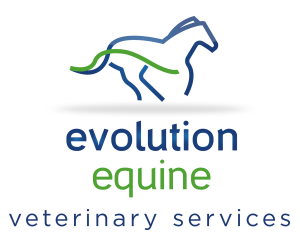Simply put, Navicular syndrome describes pain in the foot, particularly in the heel region. The pain arises from damage to the navicular bone and its surrounding soft tissue structures. This condition is most commonly seen in the front feet which carry around 30% more weight than the hind feet. There has been shown to be a heritable component to this disease, as the shape of the navicular bone can also affect the likelihood of damage occurring.
Clinical Signs
- Gradual onset of symptoms
- Lameness varies in severity from mild to severe
- Most obvious whilst lunging on firm ground, may be inconsistent in a straight line
- May be painful when standing, with pointing of one or both front feet
- Variable response to hoof testers when applied over the middle third of the frog
Any breed can be affected. Some animals are predisposed to this condition if they have poor foot balance, have only undergone infrequent farriery or are worked on hard ground for long periods of time.
Diagnosis
- Regional anaesthesia (nerve blocks)
- Radiography
- Ultrasonography
- MRI (magnetic resonance imaging)
- CT (computed tomography)
- Response to treatment
Treatment
Unfortunately there is no cure for navicular disease; it is a degenerative process so will continue over time. Rest is an important component in the management of the disease, as this allows the soft tissues to heal. Box rest for three to four weeks with a small amount of in-hand walking allows time for the inflamed tissues to heal. Work is then gradually re-introduced.
Remedial farriery to rebalance the foot and reduce the pressure on the heel is also helpful. Bar and central support shoes are often useful for managing navicular syndrome as they provide support to the heel and frog. Putting a supportive packing in the shoe can also provide extra padding to the bottom of the foot. Historically, egg bar shoes have been used: however, these do not provide any support to the heel or frog so should be avoided.
Corticosteroids can be injected into both the DIP joint and the navicular bursa. These injections can provide a good level of pain relief. However, the effect is generally short-lived and this is therefore mainly used to manage pain until remedial farriery and an appropriate management plan can be implemented. It is worth noting that horses with radiographic changes to the navicular bone do not respond well to corticosteroids.
Long term management with non-steroidal anti-inflammatories such as phenylbutazone and aspirin can also be very effective at managing the pain caused by navicular disease.
Bisphosphonates, such as Tildren and Osphos, are becoming more frequently used in veterinary medicine. Please see our article ‘Bisphosphonates: Osphos and Tildren’ for more information.
Extracorporeal shockwave therapy has been shown to reduce the pain associated with navicular syndrome and may have an effect on navicular bone remodelling. Shockwaves can be applied to either the heel bulbs or to the frog. The course usually consists of three sessions, two weeks apart.
Prognosis
Long term prognosis depends entirely on which structure is damaged. For example if bone bruising is the primary cause, then this disease has a reasonably favourable prognosis. Soft tissue injuries generally carry a poorer prognosis, with less than 20% of cases returning to soundness. If there are issues with multiple bony and soft tissue structures then often palliative treatment options should be considered, otherwise euthanasia on humane grounds is recommended.
Click to go to our information sheet on Osphos and Tildren (Bisphosphonates).
